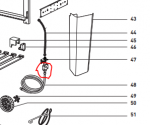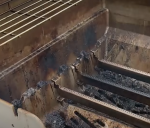LMichaels
TVWBB 2-Star Olympian
Bottom line here is you're treading on dangerous ground, you will not find one person who will endorse what you're wanting to do. Bottom line is some grills are designed to be safe to run higher temps and BTU. Take my Wolf. That thing goes though so much gas if I turn it to full bore I can see the bearings burning in my gas meter. But it's bone stock so I am sure Wolf designed it to run how it does. Of course it is all (every last bit) very heavy gauge solid 304 or maybe 316 stainless steel. I would not want to run anything made of aluminum THAT hot.
I have taken VERY much of my time explaining the ins and outs of gas and it's properties and conversion processes, even had members PM or email me for information and then after all the warnings turn around and come on this forum and blow the info off then get pi$$y when someone unloads on them a little.
Chris A has even been kind enough and taken I am sure a HUGE chunk of his time compiling information (much from what I have shared over the years) and put it into a concise "sticky".
At thing point if you want to risk the safety of your property and or your own personal well being well.........................................go ahead. I would say though don't be coming back here doubting the advice you've been given to this point with "oh do you have a photo?" Either our word is/should be good enough or it is not.
Not trying to sound harsh but you've kinda beat this whole thing to death. So either take the good advice you've been given or don't.
I have taken VERY much of my time explaining the ins and outs of gas and it's properties and conversion processes, even had members PM or email me for information and then after all the warnings turn around and come on this forum and blow the info off then get pi$$y when someone unloads on them a little.
Chris A has even been kind enough and taken I am sure a HUGE chunk of his time compiling information (much from what I have shared over the years) and put it into a concise "sticky".
At thing point if you want to risk the safety of your property and or your own personal well being well.........................................go ahead. I would say though don't be coming back here doubting the advice you've been given to this point with "oh do you have a photo?" Either our word is/should be good enough or it is not.
Not trying to sound harsh but you've kinda beat this whole thing to death. So either take the good advice you've been given or don't.
Last edited by a moderator:




